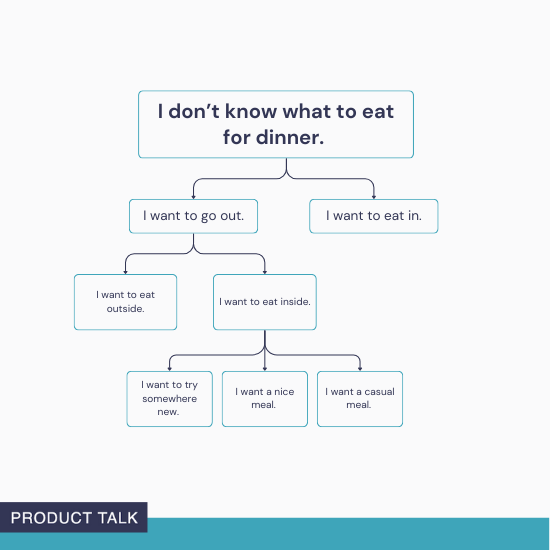How to Pack for a Move so You Can Unpack Faster
Packing isn't just about getting your stuff out of your old place. It's about making it easy to access in your new one.

We may earn a commission from links on this page.
When you're packing to move, you have a lot to keep in mind. You may want to think of how to minimize costs and how to get rid of all your extra junk, but what about packing in a way that makes unpacking easier? Few things are more annoying than getting to your new home and needing a specific object—where the heck is that screwdriver?—only to find that your past self's haphazard packing job made things difficult on your current self.
You want your transition into your new space to be smooth and even enjoyable, to the extent it can be. Here are some tips to make sure not just that the packing process is easy—but the unpacking process, too.
Start earlier than you think
Historically, when I've moved apartments, I've waited until the week of the big move to start gathering my things. This has never worked out for me. Don't do that. You should actually start three or four weeks in advance. I know that sounds annoying, but you need that time buffer.
"Packing always takes longer than expected, so start early," says Evan Hock, co-founder of MakeMyMove. "Especially with seasonal items or belongings you don't use daily."
The time isn't just for packing, mind you: packing also includes decluttering, since you don't want to spend money or energy moving items you don't need or want in the new place. Next, and maybe most importantly, you need that time to make adjustments to your plans. If the boxes you're using aren't strong enough, if you didn't budget enough for packing supplies, or if you find that you're having a hard time categorizing everything, you'll be grateful for an extra few days to get it all sorted.
Select the right supplies
A number of pros I spoke to recommended buying new boxes instead of trying to save money by using old ones. That will cost you money, but might also save you some headaches, as older boxes can lose their integrity—that, plus having boxes that are all (or mostly) the same size will making packing and moving much easier.
If you don't want to buy boxes, consider reusable plastic crates, which also give you the uniformity in addition to even greater stability. A number of companies at the local and national levels will rent these crates out to you. U-Haul, RentalCrates.com, and Perfect Crates all offer this service, but check locally, too, and compare prices for your exact needs. If you're moving nearby, a local company should do the trick. For long-distance moves, consider one of the bigger ones above just to make the return easier, as they drop off and pick up the supplies.
Another thing to keep in mind is high-quality tape. Rob Rimeris, owner of EverSafe Moving Co., says sturdy boxes and strong tape are "worth every penny." Charles Chica, co-owner of CT Best Movers, also advises you never "go cheap" with your tape: "You'll regret it when a box or bag breaks open mid-move."
Go room by room
You need to be strategic while you pack. Again, historically, I've failed at this—likely because I waited too long and just ended up running around, shoving things into boxes wherever they'd fit and praying I'd be able to make sense of the mess when I got to my new place. Instead of panicking like that, approach your packing systematically. Go room by room.
"Pack one room at a time so that all the items are grouped together when unpacking," says Stephanie Rees, assistant product manager of mailing and moving accessories for Duck Brand. Matt Graber, co-owner of Cool Hand Movers, says the same: "When you go room by room, filling moving boxes or bins, you ensure that the items to be unpacked will most likely be together in the same room on the other side. You don't want to drag boxes around your new home finding places for scattered objects."
Doing it this way is also going to help you stay organized in the new place, since it aligns with the rules of the Organizational Triangle: Everything must have a place and be stored with similar items. Grouping together similar categories makes it easier to organize and store them once you move.
Separate the essentials
While you're packing room by room, you should also be packing in order of urgency. Charles Chica, co-owner of CT Best Movers, says you should have one box of immediate essentials that should include "stuff like meds, chargers, toiletries, documents, and even just a change of clothes" and you should pack it and bring it along with you yourself, even if you hire movers for everything else.
You should also have boxes of essentials for every single room in the house—stuff that might not be so important that you'll put it in your take-with-you box, but stuff you know you'll need soon. From your bathrooms, that might include things like spare toothbrushes, soap, and a towel. From the bedrooms, think pajamas, kids' stuffed animals, and a few changes of clothes. The kitchen essentials might be some cookware and a coffee pot. With a box like this for each room, even if you're too tired to unpack on the first (or second or third) night in the new place, you'll have what you need to be comfortable so you don't have to dig through all your other boxes just to find some toothpaste.
Shanaiqua D'Sa, content marketing lead at Attic Self Storage, suggests the same thing, but adds an important caveat: "The single most overlooked thing that makes unpacking easier is ensuring you keep a pair of scissors or penknife on hand," she says, so add that to the things you're keeping accessible, not packing away. "So many people move houses, are all set to unpack, and then can't unpick the packaging tape on the boxes and don't have a pair of scissors or knife on hand to do so. It's just one added frustration that you really don't need."
While you're separating out the essentials, "Don’t overlook your healthcare needs," says Evan Hock, co-founder of MakeMyMove. "Before making the move, ensure you have access to your medical records and enough prescription medication to last until you find a new primary care provider. This small step can prevent unnecessary stress down the road."
Don't over-complicate the small stuff
We all have so much small stuff—batteries, screws, art supplies, etc. Why not keep some of it where it is? If you have a unit with drawers that contain a bunch of stuff, tape the units closed securely and transport them just like that, says Jordan Sakala of laborhutt.com. Other small items can and should be tossed into Ziploc bags, but you have to label them clearly, says Chica, and you should tape those bags where they belong. Bags of screws should be taped to the furniture they're for, for instance, and bags of chargers should be taped to the container or furniture where they're stored.
Clothes might seem like "big stuff," but you can actually think of them like "small stuff" here. Gather your hanging clothes together and slip a garbage bag right over them, keeping them on their hangers and all, says Chica. I always cut a little hole in the top of the bag so the hangers can stick out, then hang them on their new rod when I move in and (carefully) cut the bag right off.
Some clothes, though, can be used to protect the "small stuff." Multiple pros mentioned to me that scarves, socks, t-shirts, tablecloths, curtains, and more can and should be wrapped around valuables. This saves you money on packing supplies and keeps your goods safe. Rob Rimeris, owner of EverSafe Moving Co., even claims that "t-shirts cushion dishes better than bubble wrap ever did."
Label carefully
As you pack, don't forget to label your boxes. Multiple pros recommend color-coding your labels to align with the room the contents belong in, but how you do that is up to you. Shannon Beller, CEO and co-founder of Wall-Russ, says colored labels can help pro movers place boxes in the right room, but if you don't have colorful labels, even color-coded stickers can work, according to Marshall Aikman, owner of Amazing Moves Moving and Storage.
On top of that, get really detailed. "Don't just write 'misc.' because that's a nightmare when you're tired and trying to find your coffee maker on day one," says Tiam Behdarvandan, CEO and Founder of Let's Get Moving. Write the specific object names on the side of the box so you always know exactly what you're dealing with. Label the urgent boxes, first-day boxes, and every other detail that will be relevant when you get there.
Pack (and load the truck) thoughtfully
Whether you're filling your own U-haul or have hired pros to take care of this part, think strategically about the order everything gets loaded. If the kitchen of your new home is all the way in the back of house, put the kitchen boxes in last so they're the first to come out and you can easily get them to the back of the house without tripping on other boxes. Ideally, furniture should be in a separate van or truck so it can come out first, since you're not going to want to be shoving a credenza through a pile of cardboard boxes, either.
The same goes for the packing of the boxes themselves: Label them clearly and try to pack them in a way that has some kind of logical sense. A box full of kitchen appliances is more important to unpack first because you want the big stuff in place on your counter before you add in the decor. You want to unpack your sheets before your throw pillows so you can get them on the bed in the right order, so you might want those pillows on the bottom of the bedding box and the sheets on the top.
Finally, you'll want to jot down on each box what its contents are. Don't just label them by room. Instead, says Tiam Behdarvandan, CEO and founder of Let's Get Moving, write the specific object names on the side of the box so you always know exactly what you're dealing with. Label the urgent boxes, first-day boxes, and every other detail that will be relevant when you get there.
Here's a bonus tip from Marshall Aikman, owner of Amazing Moves Moving and Storage: You probably already know that you should be packing as much as you can into your suitcases to avoid over-spending on boxes, but you should think a little more critically about what should be packed in them. Heavy items, like books, are a great option, since the wheels of a suitcase can help save your back. Items that have to travel a long way through the new home are also a good option, again because of the wheels. So, too, are things that come in many sub-categories, like toiletries, as long as the suitcase has interior pockets. One pocket can be for lotion, another can be for facial skincare, and another can be for perfume, and so on.
These are suggestions for an ideal scenario, of course. I know full well how much more stressful packing is in reality; sometimes, you just don't have time to think through all of these little things. That's why it's best to start this process weeks in advance, if you can. You want time to make a plan so that the unpacking and moving-in aren't as stressful as the packing and moving-out. Start your time in your new place off right.








































































































![Building A Digital PR Strategy: 10 Essential Steps for Beginners [With Examples]](https://buzzsumo.com/wp-content/uploads/2023/09/Building-A-Digital-PR-Strategy-10-Essential-Steps-for-Beginners-With-Examples-bblog-masthead.jpg)




















































